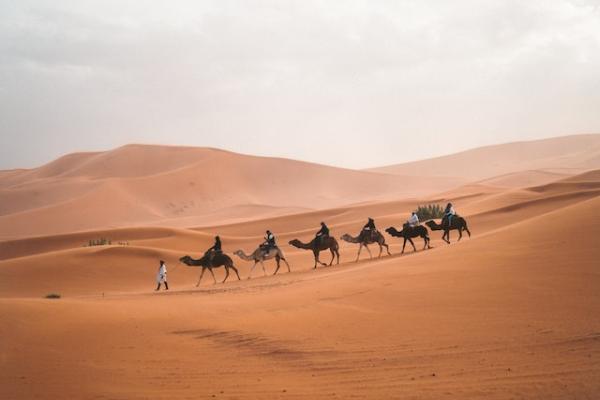The Rise and Fall of the Garamantian Empire: A Hydrological Odyssey in the Sahara Desert

In a world where the Sahara Desert is known for its scant rainfall and scorching temperatures, the ancient Garamantian Empire stands out as an exceptional case.
Research presented at the Geological Society of America's GSA Connects 2023 meeting on October 16, 2023, sheds light on how this civilization, which thrived in conditions much like the modern Sahara, managed to extract hidden groundwater, allowing them to prosper for nearly a thousand years until their water source dwindled.
The lead author of the study is Ohio Eminent Scholar, Professor Frank Schwartz at The Ohio State University School of Earth Sciences. Co-authors include Associate Professor Motomu Ibaraki from Ohio State School of Earth Sciences and Associate Professor Ganming Liu from the School of Earth, Environment and Society at Bowling Green State University.
Between 11,000 and 5,000 years ago, the Sahara experienced a period of lushness due to monsoon rains, providing ample surface water for civilizations to flourish. However, when the monsoons ceased 5,000 years ago, the Sahara reverted to a desert, and most civilizations retreated from the region—except for the Garamantes.
Image credit: NASA/ Luca Pietranera
Despite the hyper-arid conditions, the southwestern Libyan desert society from 400 BCE to 400 CE became the first urbanized desert civilization without a continuously flowing river.
The Garamantes were able to access water stored underground in a vast sandstone aquifer, possibly one of the world's largest. They adopted a technology called "foggara" or "qanats," which involved digging inclined tunnels below the water table to channel groundwater into their irrigation systems.
The Garamantes constructed an impressive 750 kilometers of these underground tunnels and access shafts between 100 BCE and 100 CE, defying the odds of a lack of annual water recharge. However, the Garamantes' fortune turned when groundwater levels dropped below the foggara tunnels.
This historical example is a cautionary tale, highlighting the vulnerability of relying on groundwater resources in extreme environments. As the world witnesses the rise of more extreme conditions in places like Iran and the unsustainable use of groundwater, the story of the Garamantian Empire underscores the importance of responsible water management and the consequences of overexploiting this vital resource.
Learn more about this presentation, titled Living in Extreme Environments: Hydrologic Serendipity and the Garamantian Empire of the Sahara Desert.
To read a published article about this work, visit EurekaAlert!
